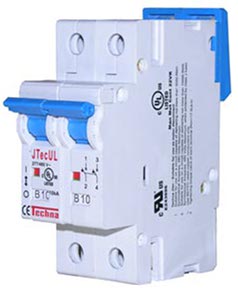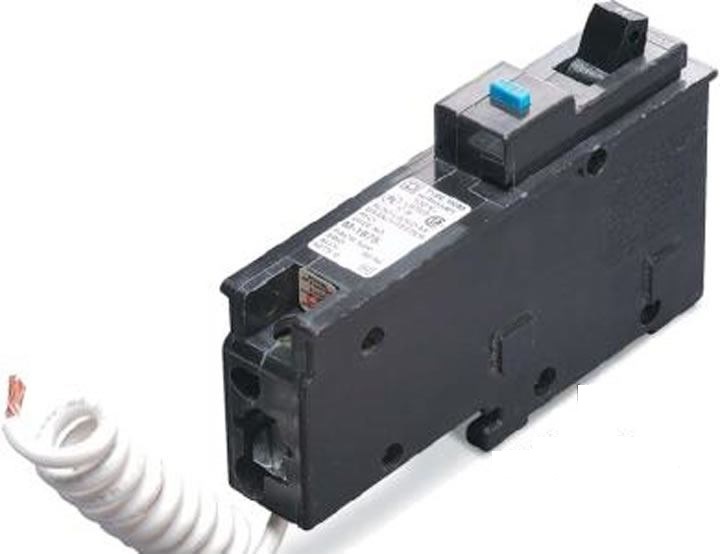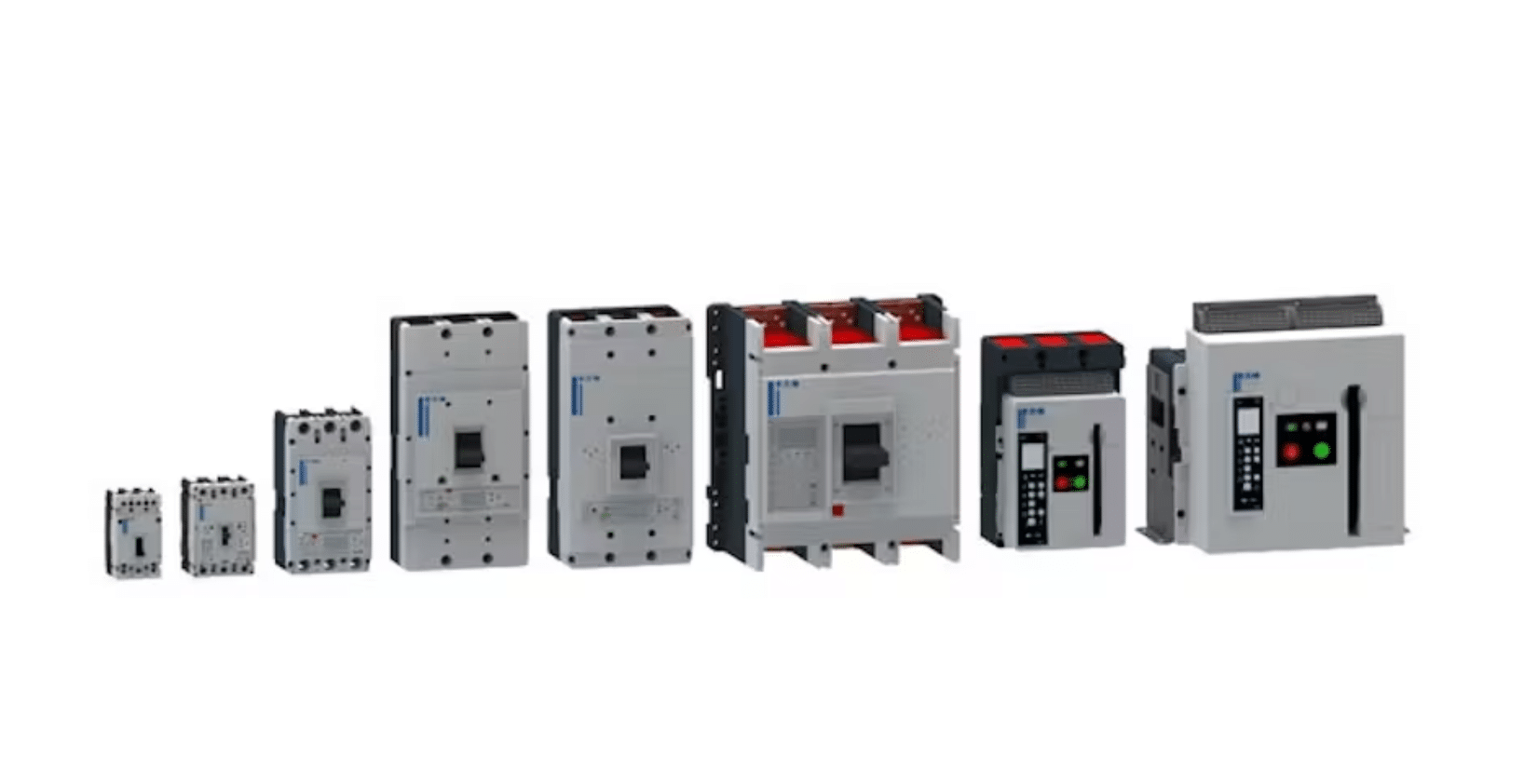Optimize Efficiency and Cut Costs with LinkSemicon's Component Solutions
Experience a new era of efficiency with LinkSemi’s Excess Electronic Components Software, streamlining your inventory sales and reducing excess costs. We offer unparalleled Cost Savings in Electronic Component procurement through AI-powered insights and automated workflows. Additionally, our advanced Electronic Components Shortage solutions help mitigate supply chain disruptions, ensuring uninterrupted production and operational efficiency.
What Are Circuit Breakers Exactly?
Circuit breakers are critical safety devices in any electrical system, whether residential, commercial, or industrial. But what exactly are they, and how do they function to protect us and our electrical equipment?Understanding Circuit Breakers
At their core, circuit breakers are automatic electrical switches designed to protect an electrical circuit from damage caused by excess current, typically resulting from an overload or short circuit. Their basic function is to interrupt current flow after a fault is detected. Unlike a fuse, which operates once and then must be replaced, a circuit breaker can be reset (either manually or automatically) to resume normal operation.How Circuit Breakers Work
When current flows through a circuit, it may encounter various levels of resistance. Circuit breakers are calibrated to handle a specific amount of current. If the current exceeds the breaker’s capacity, the circuit breaker will trip, opening the circuit and stopping the flow of electricity. This tripping mechanism is a safety feature that prevents wires from overheating and potentially causing a fire.Types of Protection Offered
Depending on their purpose, various types of circuit breakers offer protection against:- Overload: When too many appliances or light fixtures are operating at the same time on the same circuit, the wiring can overheat, leading the breaker to trip.
- Short Circuit: A more serious issue than an overload, a short circuit is when a “hot” wire (live wire) touches a neutral wire. The resulting surge in electrical current can cause the circuit breaker to trip.
- Ground Fault: Occurs when a hot wire comes into contact with a ground wire or the metal wall box or appliance casing. This is particularly dangerous in wet areas.
Significance in Electrical Systems
The proper functioning of circuit breakers is essential for the safety of electrical systems. They are strategically placed in an electrical panel to control the electrical supply to different parts of a building or structure. By breaking the circuit during abnormal conditions, they prevent electrical fires, equipment damage, and personal injury due to electric shocks. In conclusion, circuit breakers are the guardians of electrical systems. They are not only crucial for preventing damage to electrical wiring and appliances but also serve as a critical line of defense against electrical fires and personal injury.Types of Circuit Breakers
5 Main Types of Circuit Breakers include:- Standard Circuit Breakers
- Ground Fault Circuit Interrupters (GFCIs)
- Arc Fault Circuit Interrupters (AFCIs)
- AFCI/GFCI Dual-Function Breakers
- Oil-less Circuit Breakers
Types of Circuit Breakers 1: Standard Circuit Breakers
Working Principles of Standard Circuit Breakers
Standard circuit breakers, a fundamental component in residential and commercial electrical systems, operate on a simple yet effective principle. These breakers monitor the current flowing through a circuit and automatically interrupt electrical flow when they detect an overload or short circuit. This interruption is achieved through an electromechanical mechanism inside the breaker, typically involving a bimetallic strip that heats up and bends when excessive current flows through it, triggering the breaker to open the circuit and stop the flow of electricity.
Advantages and Disadvantages of Standard Circuit Breakers
Advantages:- Safety: They provide essential protection against the risk of electrical fires and equipment damage due to overloads or short circuits.
- Cost-Effective: Standard circuit breakers are widely available and relatively inexpensive, making them a cost-effective solution for circuit protection.
- Easy to Reset: After tripping due to a fault, they can be easily reset to resume normal operation, unlike fuses which need to be replaced.
- Limited Sensitivity: These types of circuit breakers may not detect low-level faults like ground faults or arc faults, which require more specialized breakers.
- Wear Over Time: Mechanical components can wear out, especially in breakers that trip frequently, reducing reliability over time.
Characteristics of Standard Circuit Breakers
- Amperage Ratings: They come in various sizes, typically ranging from 15 to 200 amps, to match the load requirements of different circuits.
- Trip Curves: Different breakers have different trip curves, determining the time it takes to trip at a given overload.
- Type: Single-pole for standard 120V circuits and double-pole for 240V circuits, like those used for major appliances.
Use Cases of Standard Circuit Breakers
Standard circuit breakers are used in almost all residential and commercial buildings. They are ideal for protecting lighting circuits, power outlets, and appliances from overloads and short circuits. Their simplicity and reliability make them the first line of defense in household and office electrical safety.Types of Circuit Breakers 2: Ground Fault Circuit Interrupters (GFCIs)
Working Principles of GFCIs
Ground Fault Circuit Interrupters, commonly known as GFCIs, are special among various types of circuit breakers , being designed to protect individuals from electric shock. They operate by constantly monitoring the current balance between the hot (live) and neutral wires in a circuit. In normal conditions, the current in both wires is equal. However, if the GFCI detects an imbalance, indicating that some of the current is leaking to the ground (possibly through a person), it rapidly cuts off the electrical power, typically within 20-30 milliseconds. This swift action significantly reduces the risk of serious electric shock or electrocution.
Advantages and Disadvantages of GFCIs
Advantages:- Enhanced Safety: GFCIs are highly effective in preventing electric shock injuries and fatalities, especially in wet or damp environments.
- Code Compliance: Their installation in specific areas (like bathrooms, kitchens, and outdoor outlets) is mandated by electrical codes in many regions, reflecting their importance in safety.
- Prevents Equipment Damage: By detecting ground faults, they also protect electrical appliances from potential damage.
- Sensitive Tripping: GFCIs can be overly sensitive, sometimes tripping unnecessarily due to minor ground faults or power surges, leading to inconvenience.
- Higher Cost: They are generally more expensive than standard circuit breakers.
- Limited Scope: GFCIs do not protect against circuit overloads or short circuits.
Characteristics of GFCIs
- Types: Available in various forms, including circuit breaker types that fit in a service panel or receptacle types that fit into standard electrical outlets.
- Test and Reset Buttons: Equipped with “Test” and “Reset” buttons for regular functionality checks and to restore power after tripping.
- Rating: Typically rated for 15 or 20 amps, suitable for protecting individual outlets or entire circuits.
Use Cases of GFCIs
GFCIs are crucial in areas where electricity and water might come into contact, such as bathrooms, kitchens, garages, outdoor areas, and near swimming pools. They are also important in commercial settings, especially in industrial environments where the risk of electric shock is higher.Types of Circuit Breakers 3: Arc Fault Circuit Interrupters (AFCIs)
Working Principles of AFCIs
Arc Fault Circuit Interrupters are advanced circuit breakers designed to protect against electrical fires caused by arc faults. An arc fault is an unintended arc created by current flowing through an unintended path. This can occur due to damaged wires, loose connections, or other electrical faults. AFCIs detect these hazardous arcing conditions by monitoring the electrical current for the unique signatures of arcing. Once detected, they immediately disconnect the power to the circuit, helping to prevent potential electrical fires.
Advantages and Disadvantages of AFCIs
Advantages:- Fire Prevention: AFCIs are specifically designed to prevent electrical fires caused by arc faults, a capability not found in standard circuit breakers.
- Enhanced Safety: They provide an additional layer of safety in residential and commercial electrical systems.
- Code Compliance: The National Electrical Code (NEC) in many regions requires AFCIs in certain types of home wiring circuits to enhance safety.
- Higher Cost: They are more expensive than standard circuit breakers, which can increase initial electrical system costs.
- Nuisance Tripping: Similar to GFCIs, these types of circuit breakers can sometimes trip unnecessarily due to benign causes of arcing, like those from some appliances or tools.
- Complexity: The technology used in AFCIs is more complex, which can lead to challenges in troubleshooting and maintenance.
Characteristics of AFCIs
- Detection Technology: Use advanced electronic technology to identify characteristic arcing conditions in a circuit.
- Types: Available as standalone AFCI breakers or as combination AFCI/GFCI breakers for dual protection.
- Compatibility: Designed to fit into standard electrical service panels, replacing traditional circuit breakers.
Use Cases of AFCIs
AFCIs are particularly important in bedrooms, living rooms, and other areas where electrical fires are more likely to occur due to damaged cords, faulty wiring, or overloaded circuits. Their use is increasingly being mandated in new residential construction and major renovations to enhance fire safety.Types of Circuit Breakers 4: AFCI/GFCI Dual-Function Breakers
Working Principles of AFCI/GFCI Dual-Function Breakers
AFCI/GFCI Dual-Function Breakers combine the functionalities of both Arc Fault Circuit Interrupters (AFCIs) and Ground Fault Circuit Interrupters (GFCIs) in a single unit. These breakers provide comprehensive protection against both arc faults (which can lead to electrical fires) and ground faults (which can cause electric shock). They monitor the circuit for the presence of unintended arcing and imbalances between the incoming and outgoing current, respectively. Upon detecting either of these hazards, the dual-function breaker promptly interrupts the electrical supply to the circuit, significantly enhancing safety.
Advantages and Disadvantages of AFCI/GFCI Dual-Function Breakers
Advantages:- Comprehensive Safety: By combining AFCI and GFCI protection, they offer a higher level of safety against both electrical fires and shock hazards.
- Space Saving: Integrating two protective features into one unit saves space in the electrical panel.
- Convenience: Installing a single dual-function breaker is more convenient and can be more cost-effective than installing separate AFCI and GFCI breakers.
- Higher Cost: While they can be more economical than separate AFCI and GFCI breakers, they are still more expensive than standard circuit breakers.
- Potential for Nuisance Tripping: As with individual AFCI and GFCI breakers, there may be instances of nuisance tripping due to their sensitive nature.
- Complexity: The dual-functionality adds to the complexity, which might complicate troubleshooting and maintenance.
Characteristics of AFCI/GFCI Dual-Function Breakers
- Combined Protection: Offers both arc fault and ground fault protection in one unit.
- Indicator Lights: Often equipped with indicator lights for easy identification of tripping due to an arc fault or a ground fault.
- Rating and Types: Typically available in common ratings like 15 or 20 amps, compatible with residential electrical panels.
Use Cases of AFCI/GFCI Dual-Function Breakers
These types of circuit breakers are ideal for use in areas of a home where both types of protection are desired. This includes kitchens, bathrooms, garages, and outdoor areas. They are also beneficial in spaces where electrical devices are used in proximity to water or where wiring is susceptible to damage, offering a comprehensive safety solution.Types of Circuit Breakers 5: Oil-less Circuit Breakers
Working Principles of Oil-less Circuit Breakers
Oil-less circuit breakers, also known as dry-type or air circuit breakers, operate without the use of oil as an insulating medium. These breakers extinguish the electric arc primarily through air, which acts as the dielectric medium. When a fault occurs, the breaker’s contacts separate, creating an arc. The arc is then elongated and cooled within a chamber filled with air, effectively interrupting the current and preventing the continuation of the arc, thereby safeguarding the circuit from damage.
Advantages and Disadvantages of Oil-less Circuit Breakers
Advantages:- Environmental Safety: They do not use oil, eliminating the risk of oil leaks and making them more environmentally friendly.
- Lower Maintenance: Without oil as a medium, these breakers require less maintenance and are easier to handle.
- Versatility: Suitable for a wide range of voltages and can be used in various settings, including residential, commercial, and industrial.
- Size and Space: Oil-less circuit breakers are typically larger than oil-filled breakers, requiring more space for installation.
- Arc Control: The effectiveness in extinguishing the arc may not be as efficient as in oil-filled breakers, especially in higher voltage applications.
- Cost: They can be more expensive than some traditional types of breakers, particularly for higher voltage applications.
Characteristics of Oil-less Circuit Breakers
- Arc Chute: Equipped with an arc chute that helps in cooling and extinguishing the arc efficiently.
- Construction: Robust construction to handle the stresses of interrupting high currents without the aid of oil.
- Operation: Can be manually or automatically operated, and they are often used in conjunction with protective relays.
Use Cases of Oil-less Circuit Breakers
Oil-less circuit breakers are commonly used in indoor applications where the risk of fire or oil leakage is a concern. They are suitable for medium to high voltage applications, including power distribution in commercial buildings, industrial plants, and sometimes in high-powered residential applications.Comparison Table Between 5 Types of Circuit Breakers
In this section, we provide a comparison table that outlines the key features, advantages, and typical use cases for each type of circuit breaker discussed. This table serves as a quick reference guide to help understand the differences and specific applications of each breaker type.| Feature/Type | Standard Circuit Breakers | GFCIs | AFCIs | AFCI/GFCI Dual-Function | Oil-less Circuit Breakers |
| Primary Function | Overload & Short Circuit | Ground Fault | Arc Fault | Combined Arc & Ground Fault | Overload & Arc Interruption |
| Typical Amperage | 15-200 amps | 15-20 amps | 15-20 amps | 15-20 amps | Varies (Medium to High) |
| Key Advantage | Cost-Effective, Easy Reset | Prevents Electric Shock | Prevents Electrical Fires | Comprehensive Protection | Environmentally Safe, Low Maintenance |
| Potential Disadvantage | Limited Sensitivity | Sensitive Tripping | Nuisance Tripping | Potential for Nuisance Tripping | Larger Size, Cost |
| Ideal Use Cases | Residential & Commercial Buildings | Wet/Damp Areas, Bathrooms, Kitchens | Residential Bedrooms, Living Rooms | Areas Needing Both AFCI & GFCI | Indoor, High Voltage Applications |
Conclusion
In conclusion, understanding the different types of circuit breakers is crucial for ensuring electrical safety and efficiency in various settings. From the ubiquitous standard circuit breakers, which provide fundamental protection against overloads and short circuits, to the specialized GFCIs and AFCIs offering protection against ground faults and arc faults, respectively, each type serves a specific and vital role. The innovative AFCI/GFCI dual-function breakers combine the best of both worlds, offering comprehensive protection in sensitive environments. Meanwhile, oil-less circuit breakers present a robust and environmentally friendly option for managing electrical safety, especially in higher voltage applications. Choosing the right type of circuit breaker requires a careful consideration of the specific electrical needs, environmental conditions, and safety requirements of each application. Whether it’s for residential, commercial, or industrial use, the right circuit breaker not only protects electrical circuits but also plays a pivotal role in safeguarding lives and property. As technology continues to evolve, so too will the capabilities and features of circuit breakers. Staying informed about these developments is key to maintaining a safe and efficient electrical infrastructure. We hope this guide has provided valuable insights into the various types of circuit breakers and their applications, helping you make informed decisions for your electrical needs.FAQ
- What are the most common types of circuit breakers used in residential properties? The most common types of circuit breakers used in residential properties are standard circuit breakers for general protection against overloads and short circuits, GFCIs in areas prone to moisture like bathrooms and kitchens, and AFCIs in living areas for preventing electrical fires.
- How do I know which type of circuit breaker is right for my home or office? The choice of circuit breaker depends on the specific electrical needs and safety requirements of the area. Standard circuit breakers are suitable for general use, while GFCIs are essential in wet areas, and AFCIs are recommended in bedrooms and living rooms. For comprehensive protection, AFCI/GFCI dual-function breakers are ideal.
- Can I replace a standard circuit breaker with a GFCI or AFCI breaker? Yes, you can replace a standard circuit breaker with a GFCI or AFCI breaker if your electrical panel is compatible. However, it’s important to ensure that the replacement is appropriate for the circuit’s amperage and voltage requirements. Professional installation is recommended for safety and compliance with electrical codes.
- What are the key benefits of using oil-less types of circuit breakers? Oil-less circuit breakers are environmentally friendly as they do not use oil as an insulating medium. They also require less maintenance and are suitable for a wide range of voltages, making them versatile for various applications.
- How often should circuit breakers be replaced or serviced? Circuit breakers should be checked regularly for signs of wear or damage. Standard circuit breakers typically have a long lifespan, but it’s advisable to have them inspected by a professional electrician during routine electrical system check-ups. GFCIs and AFCIs may require more frequent testing and replacement, as they have more sensitive components.
- Are AFCI/GFCI dual-function breakers more effective than using separate AFCI and GFCI breakers? AFCI/GFCI dual-function breakers provide the benefits of both AFCI and GFCI protection in one unit, which is more convenient and can save space in the electrical panel. They are effective in areas where both types of protection are necessary, though their cost may be higher compared to individual breakers.




